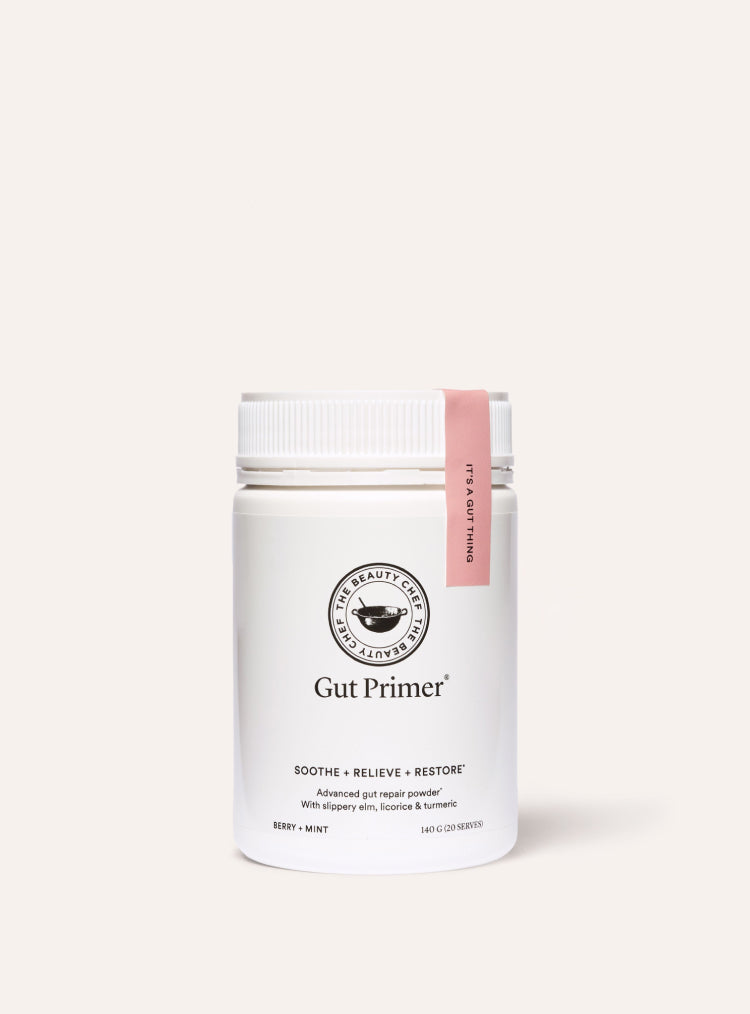
By Carla Oates
You’ve likely heard of the low-FODMAP diet or the FODMAP diet already—especially if you’re someone who has ever dealt with a gut health issue or gastrointestinal disorder such as leaky gut, inflammatory bowel disease (IBD), celiac disease or irritable bowel syndrome (IBS).
But unlike other dietary programs or trends—like ditching gluten—following a low-FODMAP diet can be much more rigorous and should only be undertaken under the watchful eye and recommendation of a gut health expert or registered dietitian.
To help clear up some of the confusion surrounding FODMAPs and the low-FODMAP diet, here’s a quick guide…
What are FODMAPs?
The acronym FODMAP stands for fermentable oligosaccharides, disaccharides, monosaccharides and polyols—and in simple terms, it’s used to categorise a collection of short-chain carbohydrate sugar molecules which can be tricky for some people to digest. And it’s this difficulty that can trigger digestive distress—including bloating, gas, cramping, abdominal pain and varying bowel habits (either constipation, diarrhoea or both).
What makes following a low-FODMAP diet even more difficult is that these easily fermentable sugar molecules are also found in a wide range of foods:
- Fructans & Oligosaccharides: found in wheat, onions, garlic and some legumes
- Disaccharides: such as lactose, found in dairy
- Monosaccharides: like fructose, founds in fruits, some vegetables and honey
- Polyols: artificial sweeteners, sugar alcohols such as sorbitol and mannitol which are naturally found in some fruits and vegetables and sometimes also used as a sugar substitute
What is FODMAP intolerance?
For those suffering from a FODMAP intolerance or FODMAP sensitivity, essentially this means you have difficulty either processing or digesting foods which are high in FODMAPs. But as the symptoms of FODMAP intolerance are similar to IBS symptoms, it can be tricky to effectively diagnose and differentiate. Usually, those who are sensitive to FODMAPs are also only sensitive to a few FODMAPs or one or two groups of FODMAPs—so pinpointing specific food triggers is certainly not an easy task.
What is a low-FODMAP diet?
As you might expect, a low-FODMAP diet is similar to an elimination diet whereby high FODMAP foods are avoided entirely for a period of time. This is where working with a healthcare practitioner can be so effective as they can ensure you are avoiding any triggering foods for an appropriate amount of time—usually four to eight weeks. After this initial elimination phase, there follows a period of reintroduction where individual FODMAP foods are introduced and the individual monitored for any symptoms. This phase can last several weeks as triggers are identified and avoided—but the goal is to establish which FODMAPs are able to be tolerated and reintegrated into the diet on a more permanent basis.
The final phase is where personalisation can occur. As each individual is likely to be sensitive to different FODMAP foods or groups of FODMAPs, it can be a long process reintegrating foods that are well tolerated. However, this reintroduction is incredibly important as many FODMAP-containing foods are also a good source of prebiotics which are vital for gut health.
So, what can you eat on a low-FODMAP diet?
While it sounds rigorous—the good news is that there are lots of low FODMAP foods to choose from, it’s simply about rethinking your regular diet and making FODMAP-friendly swaps!






